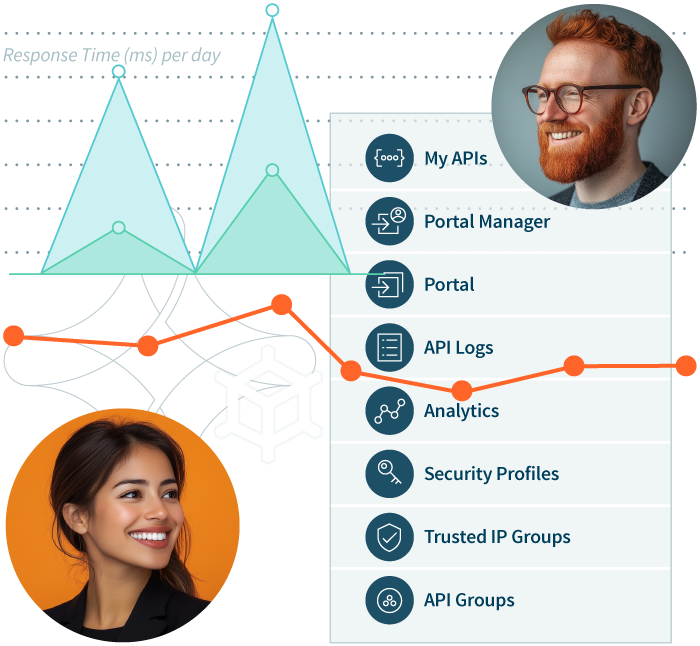Jitterbit API Manager
Empower real-time workflows with an API management platform that delivers comprehensive control, visibility, and security over the entire API lifecycle
Manage your complete API lifecycle with a boundless toolset
Jitterbit API Manager is the easiest way to manage every aspect of your APIs all in one simple, intuitive interface. From creation to control to consumption, accelerate digital transformation with the API management tool that fosters innovation and agility.

Create APIs rapidly
- Create and publish integrations and workflows as APIs with just a few clicks
- Expose external APIs as proxies for centralized management via Harmony
- APIs support both standard HTTP methods and custom-defined methods
- Easily migrate APIs across different environments
- Extend API capabilities effortlessly through multiple paths and services
Request a free trial.
Get StartedCreate and publish an API using a natural language AI Assistant
Jitterbit API Manager AI Assistant helps you build an API using AI, pushing the boundaries of API management and integration. With the natural language AI assistant, API creation and publishing become more intuitive, efficient, and accessible to all users. Publish and manage APIs with unprecedented efficiency and ease, reducing development time and increasing productivity.
Length: 7:24

Reviews for Jitterbit API Manager
We have been in collaboration for about a year now and not only is the product they offer amazing, but the service and well knowledgeable staffing has made our automation journey seamless and stress free.”
Christian J
Read more reviews on G2
We have found Jitterbit to be a very rich and full-featured integration platform. While our requirements and workflows are complex and demanding, Jitterbit has always afforded us a clean solution.”
Siba N
Read more reviews on G2



